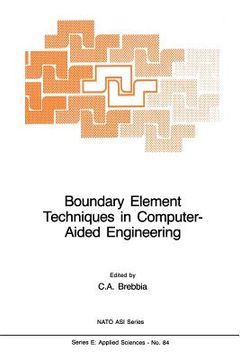Share
Boundary Element Techniques in Computer-Aided Engineering (in English)
Brebbia, C. A. (Author)
·
Springer
· Paperback
Boundary Element Techniques in Computer-Aided Engineering (in English) - Brebbia, C. A.
$ 208.41
$ 219.99
You save: $ 11.58
Choose the list to add your product or create one New List
✓ Product added successfully to the Wishlist.
Go to My WishlistsIt will be shipped from our warehouse between
Friday, June 21 and
Monday, June 24.
You will receive it anywhere in United States between 1 and 3 business days after shipment.
Synopsis "Boundary Element Techniques in Computer-Aided Engineering (in English)"
This book constitutes the edited proceedings of the Advanced Studies Institute on Boundary Element Techniques in Computer Aided Engineering held at The Institute of Computational Mechanics, Ashurst Lodge, Southampton, England, from September 19 to 30, 1984. The Institute was held under the auspices of the newly launched "Double Jump Programme" which aims to bring together academics and industrial scientists. Consequently the programme was more industr- ially based than other NATO ASI meetings, achieving an excellent combination of theoretical and practical aspects of the newly developed Boundary Element Method. In recent years engineers have become increasingly interested in the application of boundary element techniques for'the solution of continuum mechanics problems. The importance of boundary elements is that it combines the advantages of boundary integral equations (i.e. reduction of dimensionality of the problems, possibility of modelling domains extending to infinity, numerical accura'cy) with the versatility of finite elements (i.e. modelling of arbitrary curved surfaces). Because of this the technique has been well received by the engineering and scientific communities. Another important advantage of boundary elements stems from its reduction of dimensionality, that is that the technique requires much less data input than classical finite elements. This makes the method very well suited for Computer Aided Design and in great part explains the interest of the engineering profession in the new technique.
- 0% (0)
- 0% (0)
- 0% (0)
- 0% (0)
- 0% (0)
All books in our catalog are Original.
The book is written in English.
The binding of this edition is Paperback.
✓ Producto agregado correctamente al carro, Ir a Pagar.

